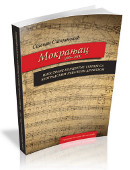
06 Jan Stevan Stojanović Mokranjac (1856–1914). The Belgrade Choral Society Foreign Concert Tours

The book Stevan Stojanović Mokranjac (1856–1914). The Belgrade Choral Society Foreign Concert Tours (Institute of Musicology SASA and Serbian Musicological Society, Belgrade 2014, 256 pages) conceived and edited by Biljana Milanović, is published on the occasion of the centenary of death of Stevan Stojanović Mokranjac. The idea of the book came to being as part of the project Mokranjac in foreign contexts (Serbian Musicological Society) with the aim to explore what foreign sources could tell us about the reception of Mokranjac’s work outside Serbia. The publication is accomplished as part of the Programme of marking the centenary of the First World War, launched by the Ministry of Culture and Information, and with the support of the Ministry of Education and Science as well as SOKOJ – Serbian Music Authors’ Organization.
This collective monograph contains the voluminous introductory chapter of the editor and nine comprehensive texts written by experts from scholar centres in Germany, Russia, Hungary, Bulgaria, Turkey, Greece, Croatia, Bosnia and Herzegovina and Serbia, who gathered around the study of the earliest example of an organised promotion of Serbian musical culture abroad. It offers a wealth of new information on Mokranjac’s concert tours with the Belgrade Choral Society that took them to numerous cities of the Central and Eastern Europe and in the Balkans at the turn of the 20th century.
In addition to primary sources, which substantially enrich the bibliography on Mokranjac (more than 200 units from old foreign periodicals, archive documentation) the book testifies on dynamic but so far little known segment of Serbian cultural history.
The tours are observed within complex frameworks of international culture and politics. Their reception is perceived as a result of creative dialogues that Mokranjac and his ensemble aimed to accomplish through the presentation of national music abroad, as an indicator of current ideas on Slavic, South Slavic, Yugoslav and Balkan interconnections, as well as a prime example of the incorporation of musical practices into the official strategies of Serbian cultural diplomacy in the years before the outbreak of First World War. Thus the book is topical for readers interested not only in music but also in the history of culture, politics and diplomacy.
